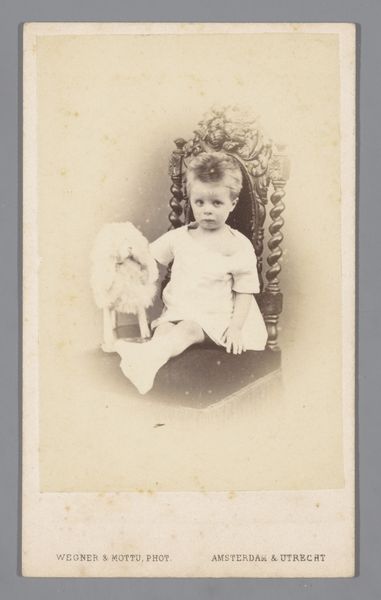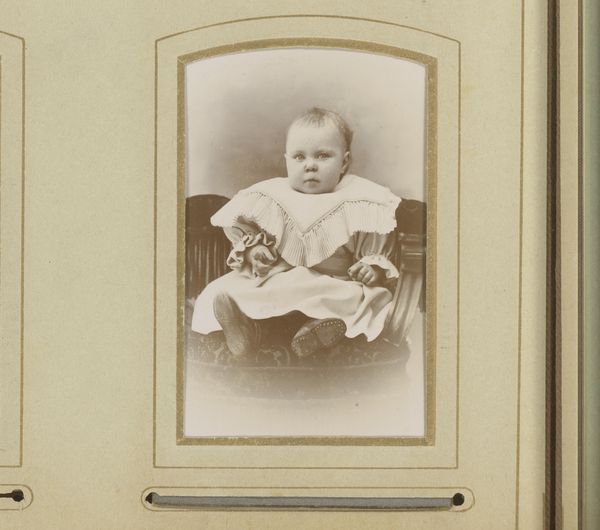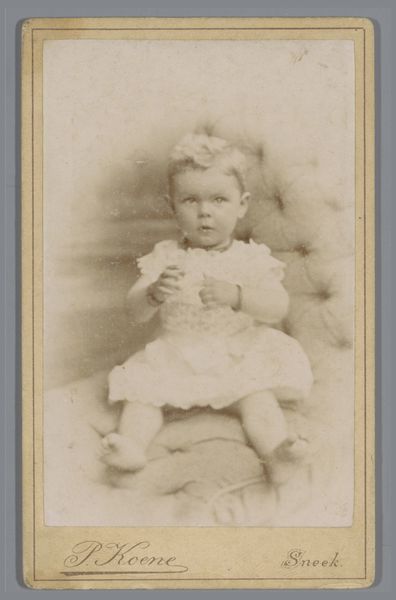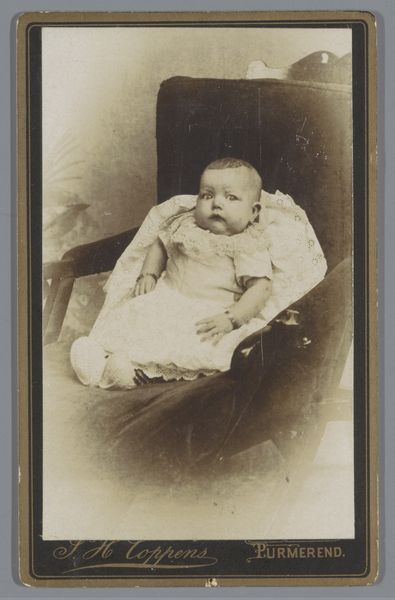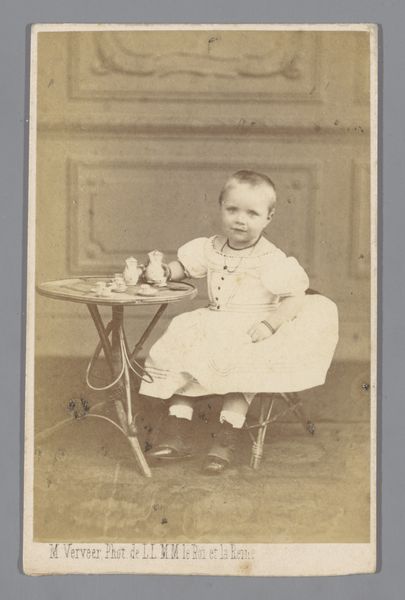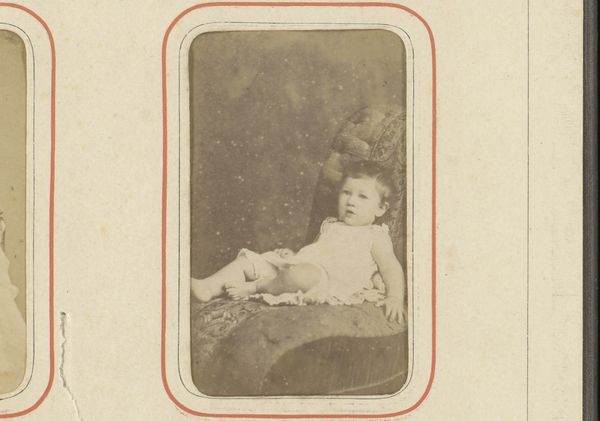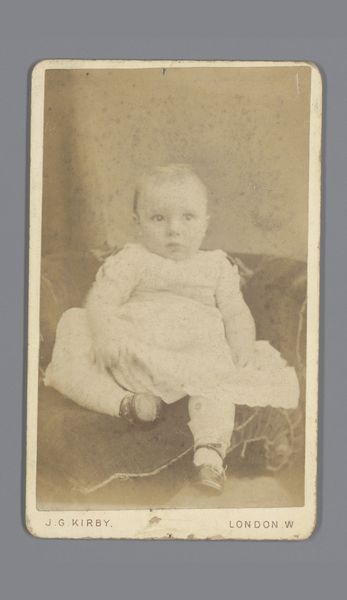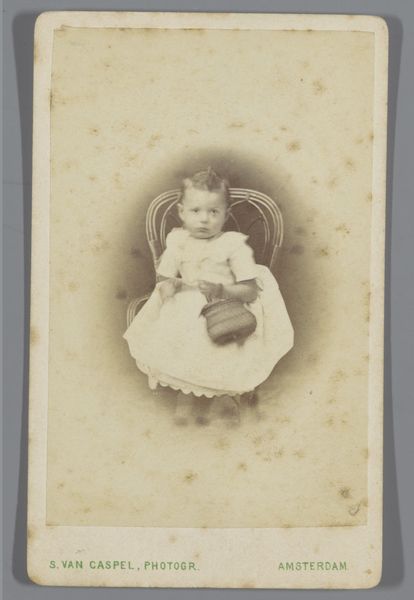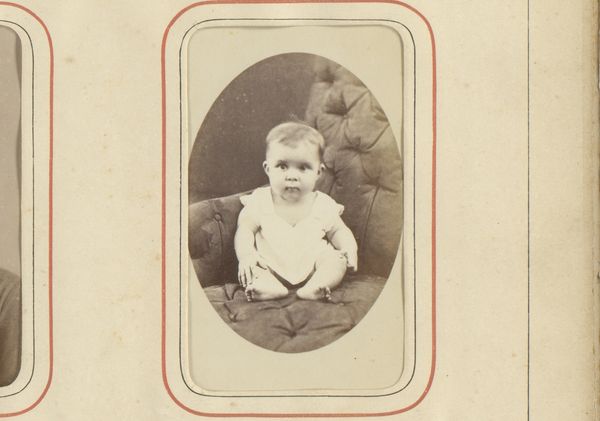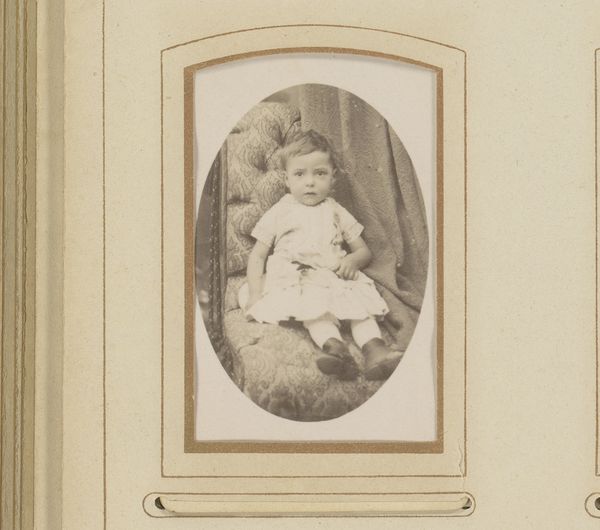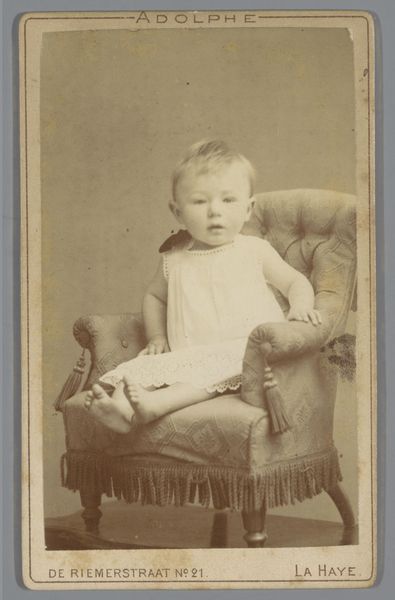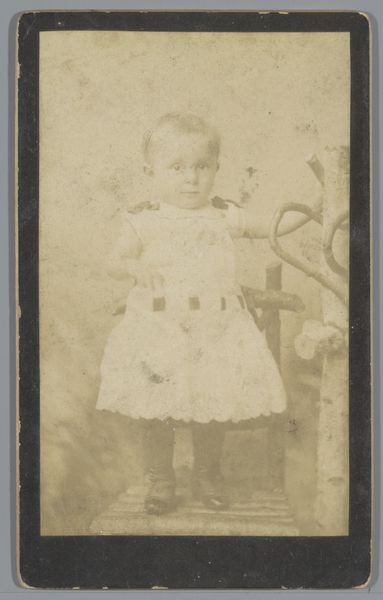
photography, pencil
#
portrait
#
photography
#
coloured pencil
#
pencil
#
genre-painting
Dimensions: height 105 mm, width 63 mm
Copyright: Rijks Museum: Open Domain
Curator: Here we have "Portrait of an Unknown Girl with a Doll in Her Arms," a photograph created sometime between 1869 and 1885, attributed to Johann Georg Hameter. Editor: There’s something rather melancholic about this image, isn't there? The sepia tones certainly contribute, and the girl's stare is incredibly direct, almost unnerving. Curator: Indeed. It’s a carefully constructed portrait. The composition is fairly standard for the period – the subject centered, posed with an object to denote status or interest. Consider how the photographer frames her with a tight depth of field, highlighting the stark stillness, which underscores a sentimentality about childhood. Editor: It strikes me how constructed the child's presentation appears, down to the exaggerated rosy cheeks. Looking at her boots, you get a clear sense of the material culture of the period – such detailed button work would have required meticulous craftsmanship. Was this photograph intended to show affluence through these material possessions, or as simple preservation of an ephemeral moment? Curator: Both are plausible. Genre paintings of this period often depict the trappings of bourgeois domesticity, using objects to construct and communicate social narratives and power dynamics. This image continues this legacy, using these codes for an intimate scene. But it also echoes nascent art movements such as Impressionism and Aestheticism in its rendering of the texture and color in the chair and the dress of the doll. Editor: And that dress seems crocheted – so handmade, labored over, destined to decay with the photograph. The production of clothing by hand was starting to be displaced by machines, which provides us insight to a changing economic landscape as well. The doll too becomes a complicated object— a commercial commodity, a childhood object, and here a material testament to social practices. Curator: True, and the formal portrait adds another layer. Through careful posing and arrangement of sartorial choices, the photographer constructs an idea of both innocence and the future. We have an interesting dynamic here, a tension of what’s captured versus constructed. Editor: It becomes a document then of both familial relations and broader material conditions, a still life made vibrant through implied human touch and cultural expectation. Thank you for allowing me to explore this snapshot in time. Curator: My pleasure. I feel we both unveiled an intriguing perspective by exploring both the symbolic visual and the lived aspects imbedded within this artwork.
Comments
No comments
Be the first to comment and join the conversation on the ultimate creative platform.
